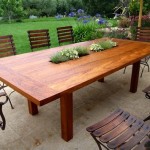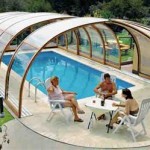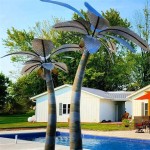Treating Untreated Wood for Outdoor Use: A Comprehensive Guide
Untreated wood left exposed to the elements can quickly deteriorate due to rot, insects, and moisture. To ensure the longevity and durability of your outdoor wood structures, it is crucial to apply a protective treatment.
Benefits of Treating Outdoor Wood
Treating untreated wood for outdoor use offers numerous benefits:
- Extends Lifespan: Treatments protect wood from decay, rot, and insects, significantly prolonging its lifespan.
- Enhances Durability: Treated wood becomes more resistant to weathering, warping, and cracking, making it less susceptible to damage.
- Improves Appearance: Treatments can alter the color or texture of wood, enhancing its aesthetic appeal and complementing outdoor designs.
- Reduces Maintenance: Protected wood requires less frequent painting, staining, or repairs, saving time and resources.
Types of Wood Treatments
Various wood treatments are available, each with its unique properties and applications:
- Preservative Treatments: Chemical treatments that penetrate the wood to prevent decay and insect damage. Options include copper-based, borate-based, and arsenic-based preservatives.
- Water-Repellent Treatments: Coatings or sealers that form a protective layer on the wood surface, repelling moisture and preventing rot.
- Stain and Sealer Treatments: Combinations that provide both color and protection from moisture, UV radiation, and weathering.
Application Methods
The method of application depends on the type of treatment used:
- Brushing or Rolling: Suitable for applying water-repellent and stain treatments to surfaces or edges.
- Soaking: Submerging wood in a preservative solution to ensure deep penetration and protection.
- Pressure Treatment: A commercial method where wood is placed in a chamber and subjected to high pressure to force preservatives into its fibers.
Safety Considerations
Wood treatments can contain chemicals that may be harmful if not handled properly:
- Wear protective gear: Gloves, goggles, and respiratory masks are recommended when applying treatments.
- Follow instructions carefully: Read and adhere to the manufacturer's instructions for proper application and disposal.
- Proper ventilation: Ensure adequate air circulation during and after application to avoid exposure to fumes.
- Dispose of waste responsibly: Follow local regulations for disposing of used treatment materials and containers.
Conclusion
Treating untreated wood for outdoor use is essential to protect it from the damaging effects of the elements. Choosing the appropriate treatment and applying it correctly will ensure the durability, longevity, and aesthetic appeal of your outdoor wood structures.

How To Outdoor Wood Treatment Tips For

When And How Often To Treat Outdoor Wood Finishes Direct

How To Treat Wood For Outdoor Use Naturally Tips And Tricks Nootancrafts

Ultimate Guide How To Treat Wood For Outdoor Use Effectively

How To Seal Wood For Outdoor Use Diy

Wood Preserver Other Ways To Treat Exterior

How To Treat Wood For Outdoor Use Naturally Tips And Tricks Nootancrafts

How To Treat Oak For Outdoor Use The Best Stains

When And How Often To Treat Outdoor Wood Finishes Direct

The Differences Between Treated And Untreated Wood Deck Bros








